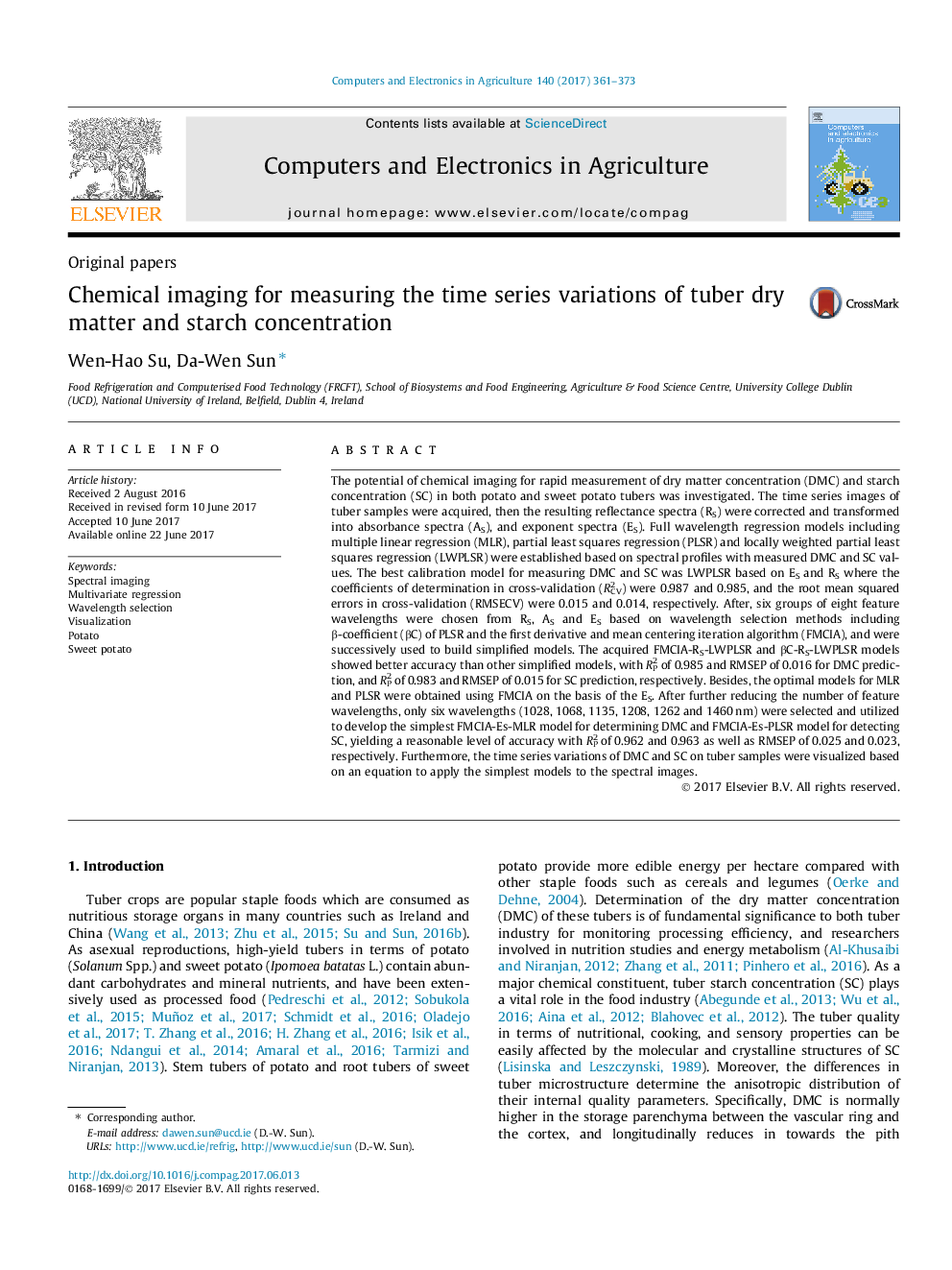| Article ID | Journal | Published Year | Pages | File Type |
|---|---|---|---|---|
| 6458620 | Computers and Electronics in Agriculture | 2017 | 13 Pages |
â¢MLR, LWPLSR and PLSR were employed to determine tuber DMC and SC.â¢The βC and FMCIA were used to hunt feature wavelengths.â¢The feature wavelengths were further reduced based on model coefficients.â¢Exponent spectra (ES) yielded higher performance for modelling.â¢Tuber DMC and SC were visualized by the simplest models using ES.
The potential of chemical imaging for rapid measurement of dry matter concentration (DMC) and starch concentration (SC) in both potato and sweet potato tubers was investigated. The time series images of tuber samples were acquired, then the resulting reflectance spectra (RS) were corrected and transformed into absorbance spectra (AS), and exponent spectra (ES). Full wavelength regression models including multiple linear regression (MLR), partial least squares regression (PLSR) and locally weighted partial least squares regression (LWPLSR) were established based on spectral profiles with measured DMC and SC values. The best calibration model for measuring DMC and SC was LWPLSR based on ES and RS where the coefficients of determination in cross-validation (R2CV) were 0.987 and 0.985, and the root mean squared errors in cross-validation (RMSECV) were 0.015 and 0.014, respectively. After, six groups of eight feature wavelengths were chosen from RS, AS and ES based on wavelength selection methods including β-coefficient (βC) of PLSR and the first derivative and mean centering iteration algorithm (FMCIA), and were successively used to build simplified models. The acquired FMCIA-RS-LWPLSR and βC-RS-LWPLSR models showed better accuracy than other simplified models, with R2P of 0.985 and RMSEP of 0.016 for DMC prediction, and R2P of 0.983 and RMSEP of 0.015 for SC prediction, respectively. Besides, the optimal models for MLR and PLSR were obtained using FMCIA on the basis of the ES. After further reducing the number of feature wavelengths, only six wavelengths (1028, 1068, 1135, 1208, 1262 and 1460 nm) were selected and utilized to develop the simplest FMCIA-Es-MLR model for determining DMC and FMCIA-Es-PLSR model for detecting SC, yielding a reasonable level of accuracy with R2P of 0.962 and 0.963 as well as RMSEP of 0.025 and 0.023, respectively. Furthermore, the time series variations of DMC and SC on tuber samples were visualized based on an equation to apply the simplest models to the spectral images.
